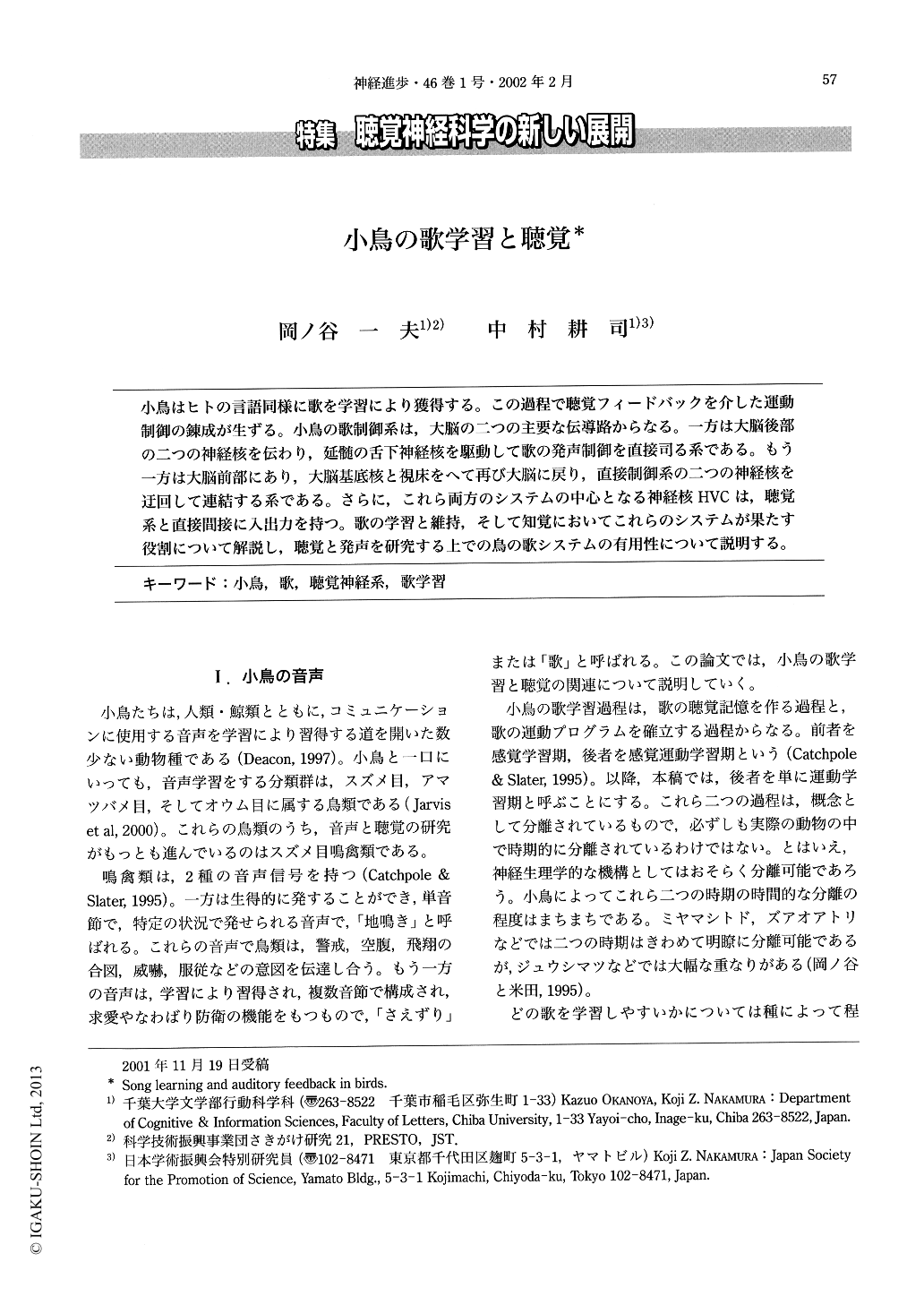Japanese
English
- 有料閲覧
- Abstract 文献概要
- 1ページ目 Look Inside
小鳥はヒトの言語同様に歌を学習により獲得する。この過程で聴覚フィードバックを介した運動制御の錬成が生ずる。小鳥の歌制御系は,大脳の二つの主要な伝導路からなる。一方は大脳後部の二つの神経核を伝わり,延髄の舌下神経核を駆動して歌の発声制御を直接司る系である。もう一方は大脳前部にあり,大脳基底核と視床をへて再び大脳に戻り,直接制御系の二つの神経核を迂回して連結する系である。さらに,これら両方のシステムの中心となる神経核HVCは,聴覚系と直接間接に入出力を持つ。歌の学習と維持,そして知覚においてこれらのシステムが果たす役割について解説し,聴覚と発声を研究する上での鳥の歌システムの有用性について説明する。
Birdsong is a learned behavior similar to human language. During the process of song learning, auditory feedback plays crucial role in finetuning the song motor control. The song control system in the brain consists of two major pathways. One of these connects two posterior forebrain nuclei and drives the tracheosyringeal portion of the hypoglossal nucleus. The other pathway runs anterior forebrain and involves a nucleus of basal ganglia and thalamus and indirectly connects the two nuclei of the posterior pathway.

Copyright © 2002, Igaku-Shoin Ltd. All rights reserved.


